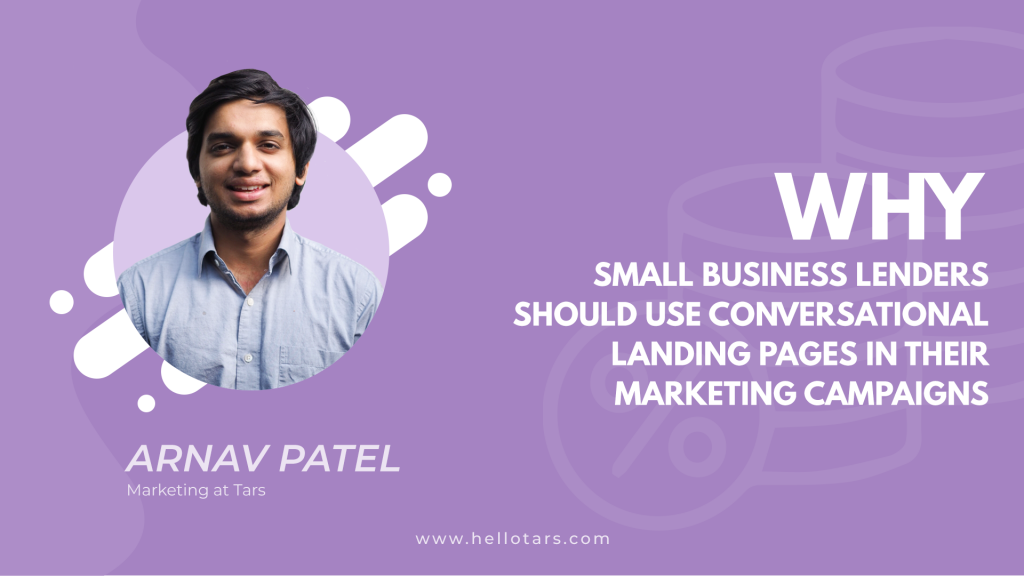High-friction processes, like loan applications, place a significant monetary burden on lenders. As platforms like Google and Facebook gain more of the public’s attention small business lenders have begun paying millions of dollars to buy ads from them. Friction, however, ensures that over 90% of the people that click on an ad drop before completing even the first stage of the loan application process. Small business lenders are essentially spending millions of dollars in ad spend for nothing! Till recently small there was no viable recourse for this problem. The cumbersome form was the only way to capture leads. The advent of chatbots, however, offers hope. Conversational Landing Pages are a radical new take on what landing pages should look like and in industries like small business lending they can increase conversion rate by up to 2x and drop
The Problem
Most CRO articles about landing page design offer a set of tweaks like reducing the number of form fields or adding an exit popup. These are novel hacks and they do work but the benefits are marginal. In this article, I am proposing a complete reimagining of the way small business lenders create their landing pages and to understand this change you must first understand how traditional landing pages fail borrowers looking for loans.
The basic premise behind traditional landing pages is simple. A user clicks on a search result (probably an ad) and the small business lender behind the link presents a landing page that packs in as much necessary information as possible to make a prospect convert and a lead capture form to fill out.
The burden of navigating the page falls fully on the prospect.
They have to scroll through, read the text, look at the pictures, maybe click on a few resources, and, when ready, fill out the pre-approval lead gen form. This approach to lead generation works, but it is far from perfect. With ever-shortening attention spans, such landing pages are nothing short of information overload. No one likes reading, everyone is desensitized from the allure of stock images, and, worst of all, forms are arguably the most boring human creation on earth. Prospects are apathetic to forms at best and if they are like me they detest them at worst. The end result is a lead generation experience that is unengaging. This lack of engagement, in turn, causes prospects to close the tab, open up Facebook and do what humans do best, procrastinate the loan application process till a later date. From the perspective of the small business lender this is wasted ad spend; A click that has resulted in absolutely no positive outcome.
The Solution
Conversational Landing Pages turn the paradigm of traditional landing pages on their head. Rather than presenting as much information as possible, Conversational Landing Pages function on the basic philosophy that less is more. Here’s how they work:
A prospect clicks on the Google Ad, just like they did with the traditional landing page, except this time instead of being greeted by a wall of text images and form fields, they see this:
The whole landing page is a chat with an automated conversational agent (chatbot) that captures leads and user queries. The text is shown in bite-sized chunks that are no longer than a few tweets and rather than being confronted with a whole form at once, each field is interspersed with the visual stimulation of new message bubbles popping up on the screen:
The end result is the transformation of a once unengaging, impersonal lead generation process into a one-on-one conversation that and consequently converts at a high rate.
Conclusion
In industries like Small Business Lending, friction in the marketing and sales process results in low conversion rates and wasted adspend. Conversational Landing Pages could serve as the solution. By re-imagining traditional web interactions as a chat, they provide an engaging lead generation experience that converts at rates that are 2-3x higher than regular landing pages. If you are interested in seeing exactly how you can create a Conversational Landing Page like this, check out our full guide by clicking on the or

Arnav is the Director of Content Marketing at Tars. He spends most days building bots, writing about conversational design and scrolling through Giphy’s trending section looking for the gifs that go into the Tars Newsletter.

0 Comments on "Why Small Business Lenders Should Use a Conversational Landing Page"